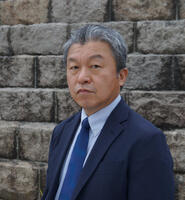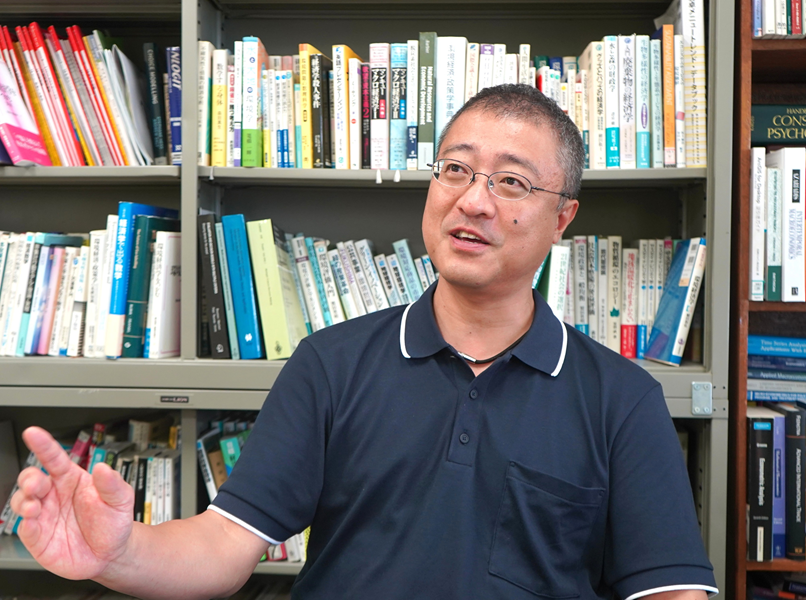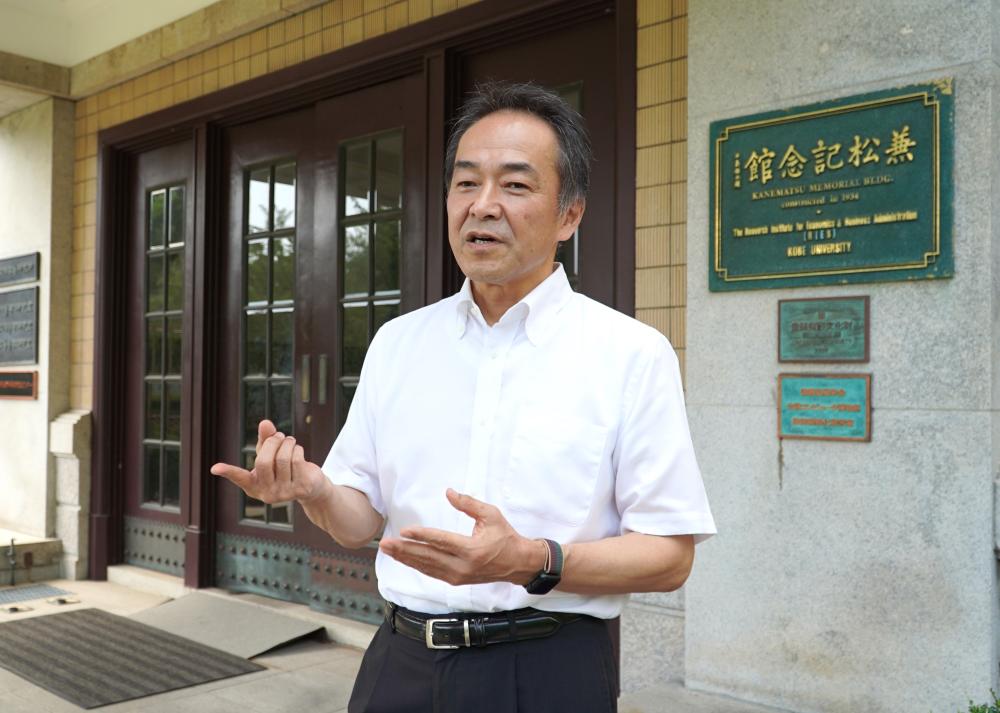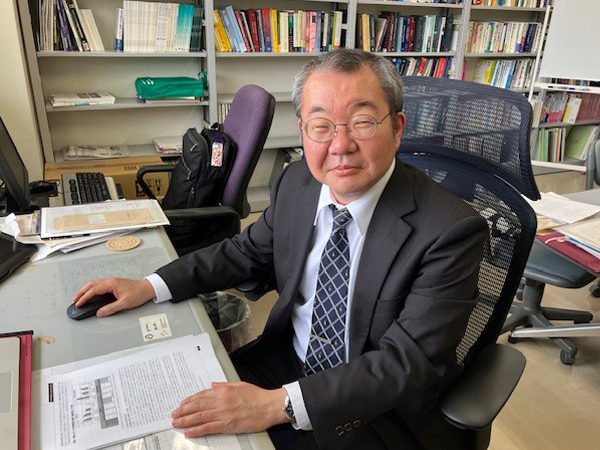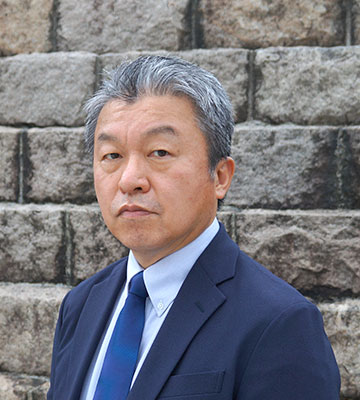
The Kansai region of Japan, home to the well-known cities of Osaka, Kyoto and Kobe, is served by three airports. Kobe Airport and Itami (Osaka) Airport offer domestic flights, with Kansai International Airport (KIX) serving as the region’s only provider of transnational flights.
At the September 2022 meeting of the three Kansai region airports, it was agreed that Kobe Airport will start providing regular international flights around 2030. (The meeting was chaired by the chairman of the Kansai Economic Federation, MATSUMOTO Masayoshi). They also approved extra international charter flights during the 2025 Osaka International Expo.
Before the coronavirus, many international travellers visited the Kansai region, however there is currently some uncertainty about the future demand for flights. Why does Kobe Airport need international routes? How should logistics be divided between Kansai’s three airports? We ask Professor TAKEBAYASHI Mikio (Graduate School of Maritime Sciences) who is an expert in aviation policy.
The Kansai Region needs multiple international airports
It has been reported that local governments in the Senshu area of Osaka (near Kansai International Airport) are strongly opposed to Kobe Airport operating international routes.
Professor Takebayashi:
I understand these sentiments. However, for a region like Kansai where there is such high demand for air travel, I think there are issues from a risk management perspective if Kansai International Airport is the only airport offering international routes. It is necessary to consider whether having KIX as the only international airport is good for Kansai and Western Japan’s economy.
According to the ‘Grand Design of National Spatial Development towards 2050’ formulated by the Ministry of Land Infrastructure, Transport and Tourism, the Linear Chuo Shinkansen line will eventually be extended to Osaka. Upon completion, this maglev line will create one big economic zone consisting of three major metropolitan areas; the capital (i.e. the Tokyo metropolitan area), Chubu (e.g. Nagoya) and Kansai (e.g. Osaka). If this zone becomes a reality, it will be necessary to consider whether having Kansai International Airport as the only international airport in the Kansai Region is sufficient from a mid to long-term perspective. I also think that dividing international routes between multiple airports would also be logical from a risk diversification standpoint.
It is hard to predict what the economy and society will be like in the next 10 to 20 years, however we must bear in mind that there will be airports outside the country that can also serve as a gateway to Japan. These include Incheon International Airport in South Korea, Taiwan Taoyuan International Airport, and Hong Kong International Airport. Japan should have domestic gateway airports in Japan. There is the Narita and Haneda two airport system in the Greater Tokyo Area. I think having more than 2 international airports is desirable for the Kansai region as well from a risk diversification standpoint.
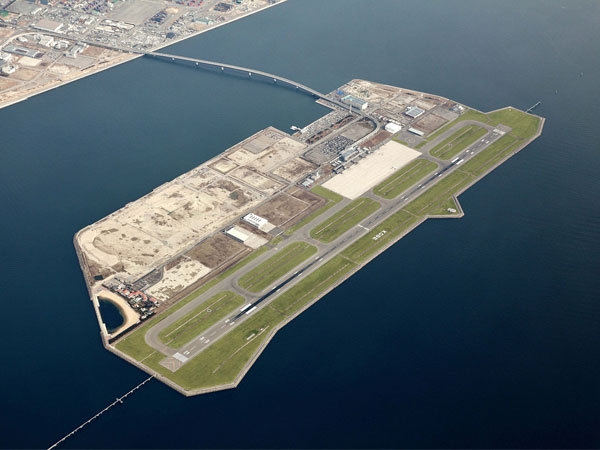
(photos supplied by Kansai Airports)
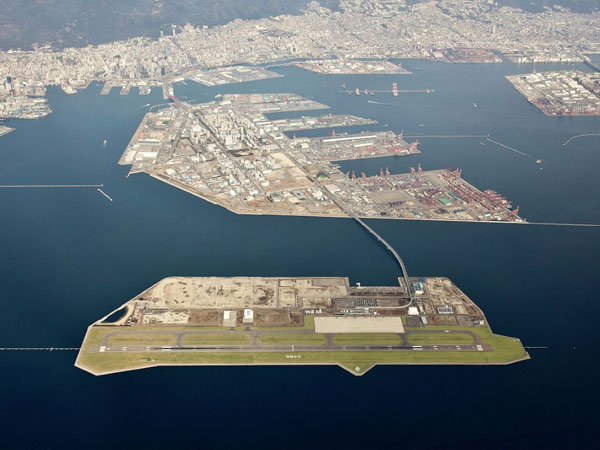
(photos supplied by Kansai Airports)
Preparing for disasters
Having a back-up facility is important in case a disaster occurs, isn’t it?
Prof. Takebayashi:
I believe that the 2018 incident where part of Kansai International Airport was submerged was the impetus for the international-focused part of the talk (at the 3 airports’ meeting) in the first place. The company that runs KIX dislikes the use of the term ‘submersion’, however the airport was rendered inoperable because a runway and part of its facilities were flooded. Some passengers were able to fly out of the airport a few days later but freight traffic was suspended for a long period of time. Large volumes of freight were handled by geographically distant airports, such as Haneda and Chubu Centrair, resulting in chaos. Considering matters such as the need to divert passenger flights (for example when atmospheric conditions make it difficult to land at the destination airport), I think that the 2018 incident made many people realize that it is impossible to ensure stable international transit unless flight demand can be appropriately divided among the region’s airports (as much as possible). It is necessary to consider these risks when establishing airport operations, especially as Japan is a country that faces many natural disasters. Therefore, it is logical for Kobe Airport to handle international flights too.
Is this the idea of always being prepared against risks?
Prof. Takebayashi:
When it comes to aspects of trade (e.g. aviation services), it is not possible to simply change the route temporarily when a disaster or another problem occurs. It is impossible to instantly set up the all the required facilities such as immigration, quarantine and customs, and staff must also be allocated. Ways of thinking about risk management are moving towards the idea that emergency and everyday systems should coexist, such as the routine use of emergency foods. I think international airports should use their (potential) back-up airports during normal times.
Itami Airport has a strict curfew to prevent noise issues at night, therefore it is difficult for it to serve as a back-up for Kansai International Airport. Airline companies take into account the time difference between the places of departure and arrival among other factors, and request flights to be scheduled at times when it is easy to attract many travelers to the airport. Therefore, they choose airports that have a high degree of freedom regarding route provision. Kobe Airport is offshore so I think it can handle flights more flexibly than Itami.
The aviation boom changed society
There were also plans to build an offshore airport in Kobe to solve Osaka (Itami) Airport’s noise pollution issues back in the 1960s-70s, however Kobe City rejected the proposal at the time.
Prof. Takebayashi:
Compared to today, socioeconomic circumstances were very different during MIYAZAKI Tatsuo’s term as mayor of Kobe (1969-1989). The proposed new airport to resolve Itami Airport’s noise issues was going to be built offshore and not near the city itself. It seems that the Kobe offshore area was selected as a candidate, however I think that the Kobe City local government decided that the ‘citizens would not understand why we would bring noise to Kobe City’. As a result, it was decided around the mid-70s to build the new airport in Senshu instead.
At the time, airplane tickets were expensive so the airport would not have been something that the general public could easily use. As air travel was out of reach for many people, I think that considerations were made as to whether or not it would be good for the citizens to establish an airport in a location where there were concerns about noise.
However, society had undergone significant change by the 1990s. This began with the deregulation of domestic flights in America in December 1978. America’s move led to substantial relaxation of these regulations in Europe and subsequent relaxation or deregulation of the airline industry all over the world. The USA’s international routes were also covered by Open Skies Agreements and these spread around the world, leading to a boom in air transportation.
Kansai International Airport opened during this time period. Airports went from being seen as unwelcome, noisy facilities to being positively perceived in terms of regional vitalization.
Prof. Takebayashi:
Amidst the global aviation boom, airline companies offering low fares and Low Cost Carriers (LCCs) increased in America, Europe and Southeast Asia, eventually spreading to the Far East, and thus a new service could be provided worldwide. This created a clear divide between well-located airports and badly planned airports. Some airports like Canada’s Montreal Airport relocated (again) from the suburbs to the city.
Kobe appeals to business customers
What about the division of roles between Kansai’s 3 airports? How will international routes be divided between Kansai International Airport and Kobe Airport?
Prof. Takebayashi:
This will be decided by the market. Pioneering Low Cost Carriers (LLCs) such as Southwest airlines (USA) and Ryanair (Ireland) achieved success by offering their flights from fringe airports, which are located in the suburbs far from city centers and are thus cheaper to operate from. Before the coronavirus pandemic, Kansai International Airport had set up a LCC terminal. Although Kansai International Airport also hosts full service airlines, they don’t want to miss out on the market for LCCs.
It is likely that Kobe Airport will target different customers to Kansai International Airport. I think that businesspeople travelling on high-cost full service airlines would prefer Kobe Airport because it allows them to easily access not only Kobe City but also Osaka and Kyoto via JR trains. In addition, there are many alternative ways to get to Osaka from Kobe in a similar amount of time, such as via the Hankyu Railway or Hanshin Railway lines. Offshore airports generally have an image of being inconvenient but this is definitely not the case with Kobe Airport. Kobe Airport is on par with an inner city airport, therefore I think that airlines that appreciate its advantages will use it to provide routes that appeal to business people, for example.
Environmental issues could limit flight demand
Passenger demand declined sharply during the coronavirus pandemic. Do you think there is a danger that Kansai’s three airports may go bankrupt?
Prof. Takebayashi:
Japan has imposed strict limitations on arrivals from abroad due to the pandemic, however other countries around the world have quickly bounced back to near pre-pandemic levels of demand. Japan also moved to greatly relax its entry restrictions in October and I think that in the short-term we will see the dramatic realization of demand for travel to Japan that has built up during the pandemic. I think that tourists who wanted to travel to Japan will visit and that business travellers will also return to previous levels. Around the next 1, maximum 2 year period passenger numbers will increase, and around 2025 we will see the return of pre-pandemic trends. In the short-term, I think there will be plenty of passenger demand.
However, there is a huge problem in the mid to long term. Various industries around the globe have promised to achieve ‘net-zero’ emissions by 2050. This is where the amount of greenhouse gases emitted is cancelled out by the amount that is absorbed. In the aviation industry there is a call to increase the percentage of SAF (Sustainable Aviation Fuel) that is used. SAF is biofuel made from plant sources or waste cooking oil.
However, it seems that SAF is currently three times more expensive than the conventional airplane fuel kerosene so it would significantly increase airlines’ operational costs. In addition, the ongoing Russian invasion of Ukraine is making energy prices soar, therefore it is likely that flight demand will fall due to the resulting increased fares. This will have a big impact on tourism first and foremost. Business demand is comparatively stable, however the trend for online meetings may reduce such travel.
In the UK, there is a government project called FlyZero, which aims to develop a hydrogen-fueled airplane. This kind of new technology may lessen the impact of high fuel prices were it to be developed soon, however it is hard to say for certain. It is likely that the industry will remain in a chaotic state for a decade or so after the post-pandemic rebound in demand.

